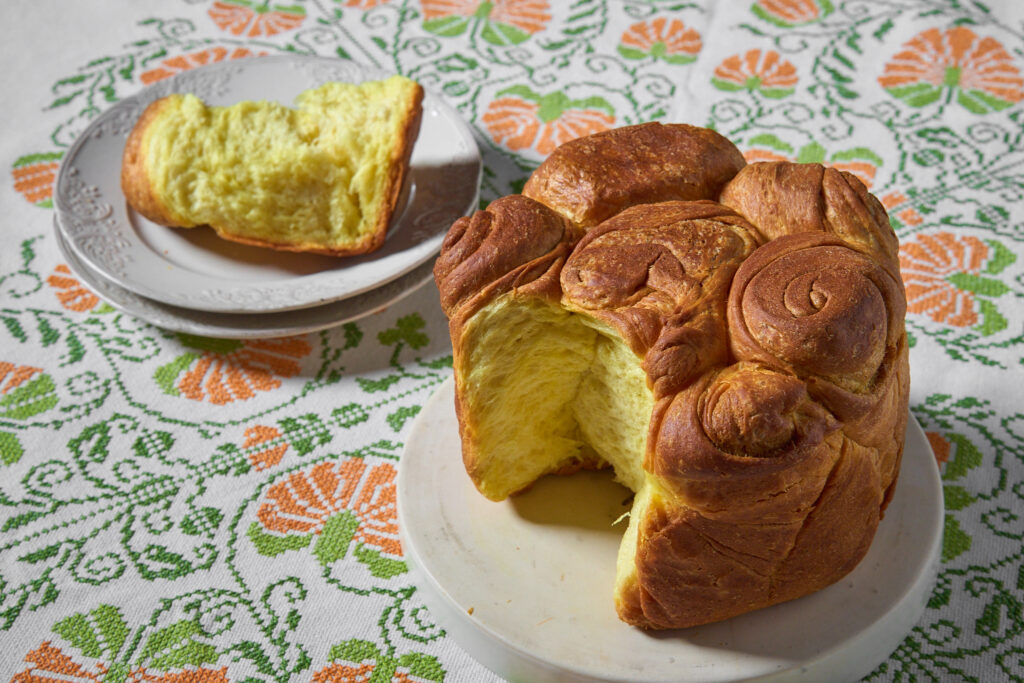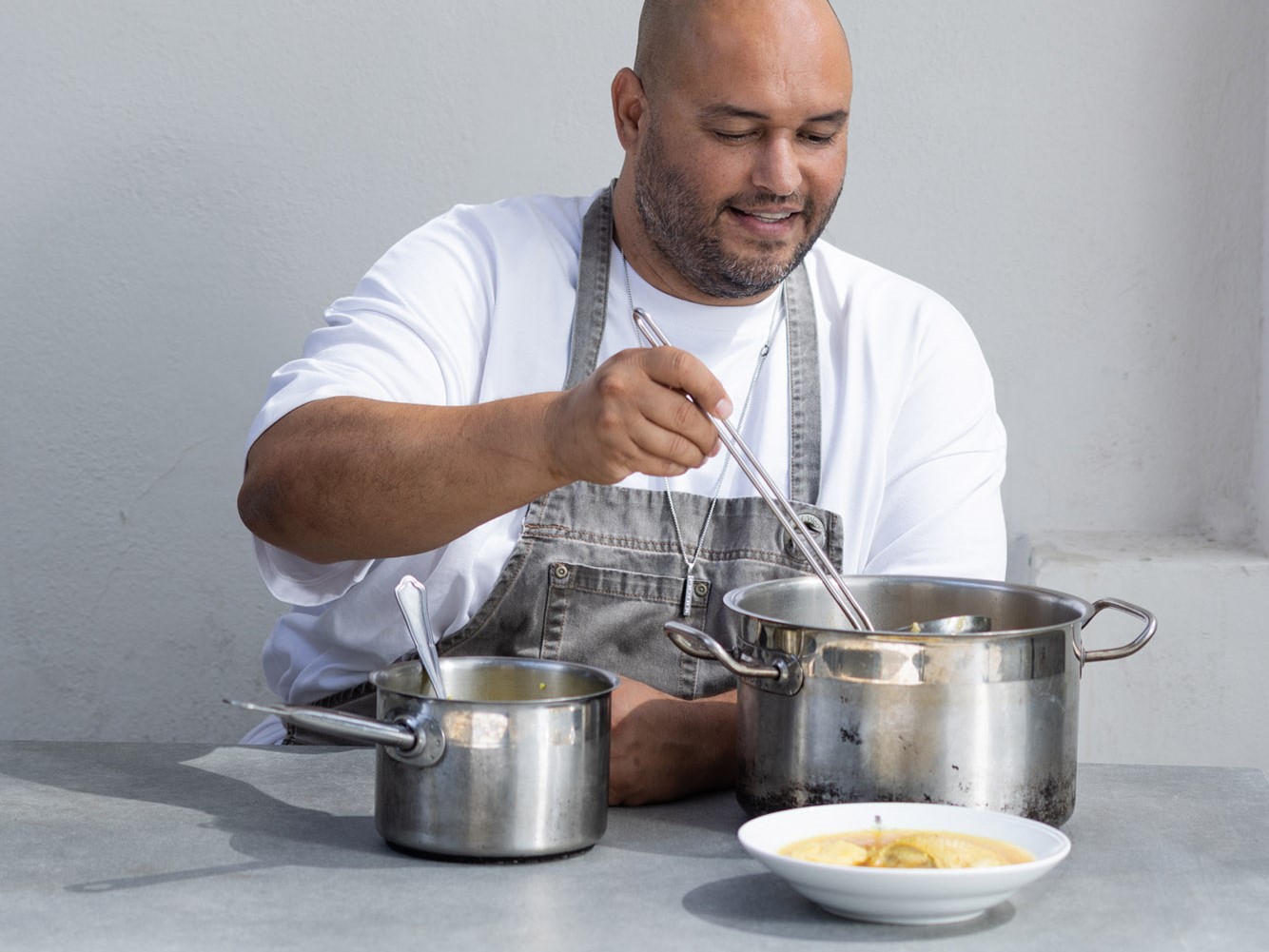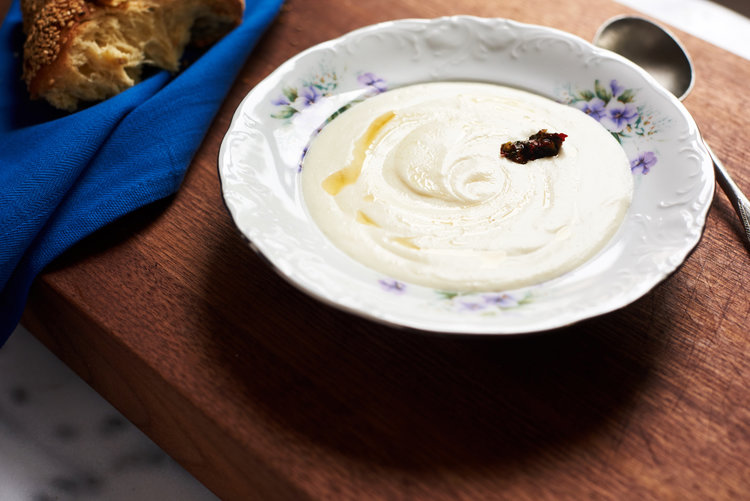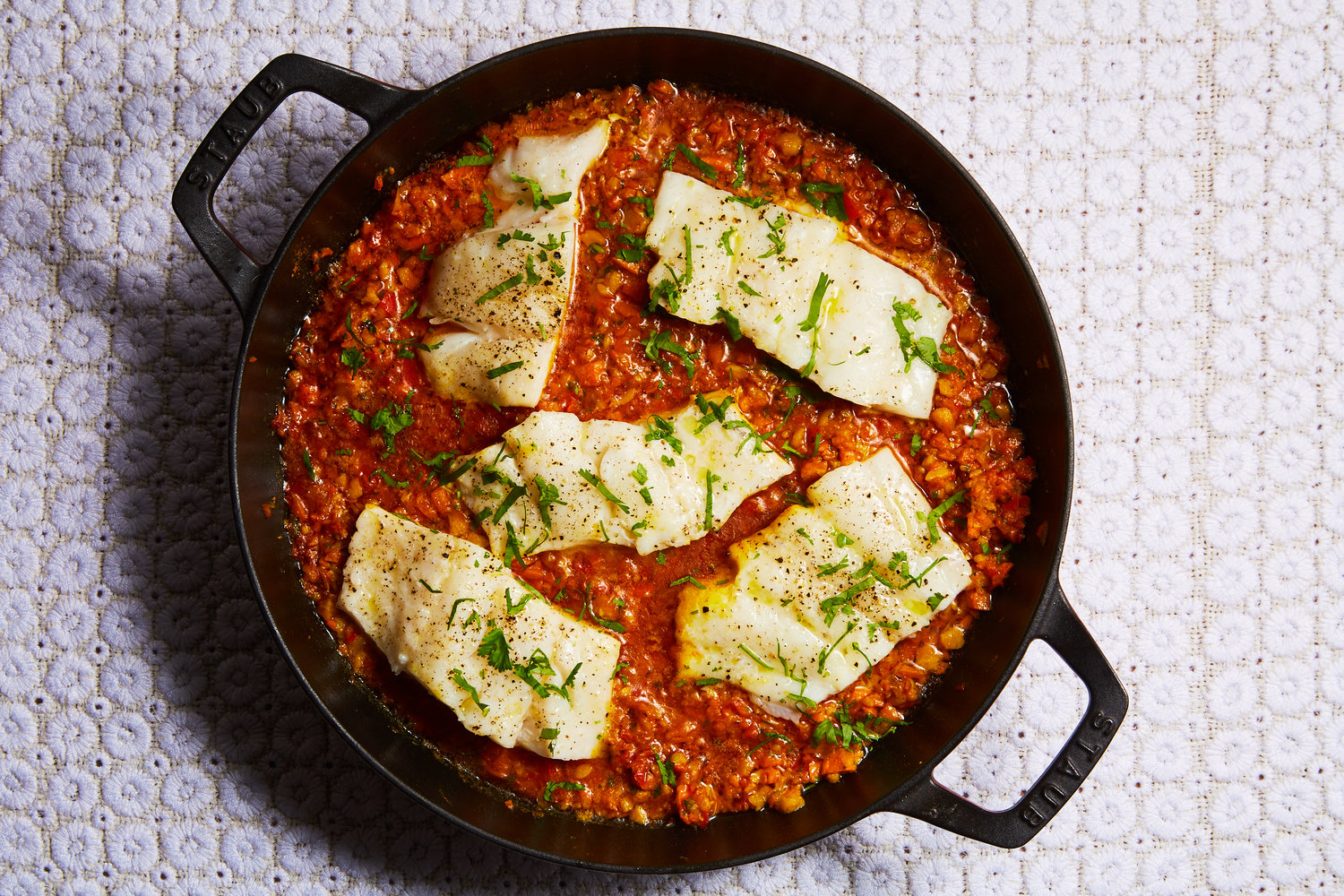This recipe is part of Asif’s The Open Kitchen Project where cooks who were evacuated during the war are invited to a home in Tel Aviv to cook a dish that they miss from their own home.
“Kubaneh has a unique aroma; it’s not an everyday staple like rice, but smells of home,” Shosh Yosefi explained to Asif Content Manager Gerda Glazer when she came over to cook for The Open Kitchen Project. Before October 7, when Shosh and her family were evacuated from Moshav Netiv HaAsara, the elaborate Yemenite bread was often on their table on Shabbat mornings.
While jachnun (another Yemenite Shabbat bread) occasionally graces her table, Shosh dismisses its preparation as not her forte. “When I was younger, I made jachnun — it’s a lot of work,” she remarked, as if the difficult process of making kubaneh is child’s play.
Born in Yemen, she arrived in Israel just after the country’s founding, not knowing her birthday or how old she was. Despite her unofficial age of 80 today, she has the energy of someone a generation younger. Growing up, her mother worked, so Shosh and her sister had to learn to cook. “In Yemen, kubaneh was baked as a single mass — a dough cooked in a pot resembling bread — and was served with soup, hilbeh (fenugreek paste), and beef on Shabbat morning. This was how my mother made it,” she explained. “In Israel, kubaneh takes a different form — it’s not just [a plain] bread; it’s rich, thanks to the butter, and has an appearance reminiscent of a flower.”
When Shosh got married, her husband commented that her kubaneh didn’t match the caliber of ones made by women in his family. “Instead of giving up, I decided to prove him wrong,” she joked. She delved into books, asked questions, and taught herself the art of making kubaneh.
Over the years, she has baked thousands of kubanehs — on Shabbats, for special occasions, for her family, and friends on Netiv HaAsara. “We eat kubaneh with grated tomatoes, olives, hard boiled eggs, zhug, and cheese,” she said. As she does for many Shabbats, she had prepared one for October 7, planning to serve it to her kids and grandchildren.
As she waited for many hours for rescue, she snuck out of the shelter to grab a piece of the kubaneh to prevent her sugar level from dropping for medical reasons. With tears in her eyes, she recalled friends who were murdered during the attacks.
On Netiv HaAsara, kubaneh is beloved by Jews of many backgrounds. So Shosh asked the Royal Beach Hotel, where many of the kibbutz members are living in Tel Aviv, if she could use their kitchen to bake some for Shabbat.
The conditions in the Glazer kitchen are different from what Shosh is used to at home — the kitchen is darker and cooler, which prolongs the dough’s rising time, the dishes are not the same (the cup of water is larger), and the kubaneh pot is smaller. But when the bread comes out of the oven, it’s perfect.
As she baked, Shosh said she misses the familiarity of her own cups and pots, the hawaij spice blend she grinds for her coffee, and the jar of homemade samna — a clarified butter she makes and infuses with spices like cardamom and fenugreek. But, she appreciates the opportunity to be back in the kitchen. “We get by; the main thing is that you can bake a little,” she says. Despite the changes of location, she remains steadfast in her routine, insisting on wiping the counter after each step. “It’s not optional,” she asserted.
While the dishes are different, the dough is the same. They know each other, she knows how to feel it in her movements, what it lacks in texture and taste, and when it needs more flour, another short rise, or a gentle pat of butter. Between rises, she stepped outside to breathe in the garden, relishing the peace and solitude that is harder to find in a busy hotel. Looking for something to read, she picked up a baking book by chef Erez Komarovsky, curious about his kubaneh with leeks.
The hotel room she’s living in is small and Shosh longs for time alone at home and in her kitchen. She has visited her house several times, pleading with the soldiers accompanying her to give her more than half an hour to tidy up the thick layer of dust left by recent events. It took three attempts for her to secure a significant period to organize the house to her satisfaction. “When you come home after being away, it doesn’t feel like home, but a different place where you have to organize everything from the beginning. That’s why it’s important to me that it’s organized, so I feel like I’m coming home,” she said.
The day’s cooking concluded with a beautiful, tall, and delicious kubaneh, and a heartfelt wish for Shosh’s swift return to her home and sunny kitchen where she can bake once again. In response, Shosh promised to bake a kubaneh for her hostess when she finally gets home.

Shosh’s Kubaneh Tips
- If the dough sticks to the bottom of the bowl, it indicates that there’s too much water; add a bit more flour. Additional flour can be added even after the first rise.
- Traditionally, Yemenis enjoy kubaneh on Saturday morning with zhug, grated tomato paste, and hard-boiled eggs, giving it a savory twist. For a sweeter version, serve it with honey and jam, and add an extra teaspoon of sugar to the dough.
- Speed up the rising process by preheating the oven to 50C (120F), turning it off, and placing the kubaneh inside.
- When pressed for time, reduce the process to two risings. In summer, rising is quick, taking less than 1 hour each time, while winter may extend the process to 1½ to 2 hours.
- If melted butter becomes overly liquid in the microwave, transfer it to the refrigerator to solidify.
- For a small pot, make larger dough balls; for a large pot, opt for smaller ones.
5 cups sifted bread flour
1 heaping tablespoon active dry yeast (On a cold day use 1½ tablespoons, on a hot day use 1 flat tablespoon)
5 tablespoons sugar
2 eggs
1 tablespoon salt
1 cup lukewarm water
200 grams (14 tablespoons) butter or samna, softened at room temperature but unmelted
- Mix the flour, yeast, and sugar in a deep bowl or the bowl of a stand mixer fitted with the dough hook.
- Add the eggs and salt and mix thoroughly. Add the water.
- Knead until the dough is smooth and soft. If using a stand mixer, mix on medium speed for about 10 minutes, if kneading by hand, about 15 minutes. The dough should not be wet or sticking to the sides of the bowl.
- Sprinkle 1 spoonful of flour over the dough and lightly press it in with your fingers. Transfer to a greased bowl, cover with a towel and let rise until doubled in volume, about 1 -1 ½ hours. Dough that has properly risen is easier to roll out.
- Remove the dough from the bowl. If it is very sticky, add a little flour, and knead briefly.
- Grease a medium kubaneh pan using parchment paper.
- Divide the dough into 10 balls, 7 equal balls for the medium pot, 3 slightly larger balls for the small pot. Place on a baking tray, evenly spaced, cover with a towel and let rise until doubled in volume (about 1 hour in the summer, 1½ to 2 hours in winter). If you are in a rush, you can skip this second rise.
- Grease the work surface and all the dough balls with butter, to prevent them from drying. Working with one ball at a time, gently flatten it and stretch out into a rectangle, 8x15cm (3×6 inches). Bring one of the long sides into the center, then fold the other long side on top of it, so you fold it into thirds. Add a few more dots of butter, then gently roll it up from the short side. Make sure to grease the dough between each roll and each layer, as well as on all sides. Place the rolls in the greased pot so they are evenly spaced with the coiled side facing up (7 rolls in the large pot, 3 rolls in the small pot). Cover and let rise for 40 minutes.
- Preheat the oven to 180C Fan (350F).
- Bake until golden brown, about 50 minutes. Let the rolls cool completely before removing from the pan.




